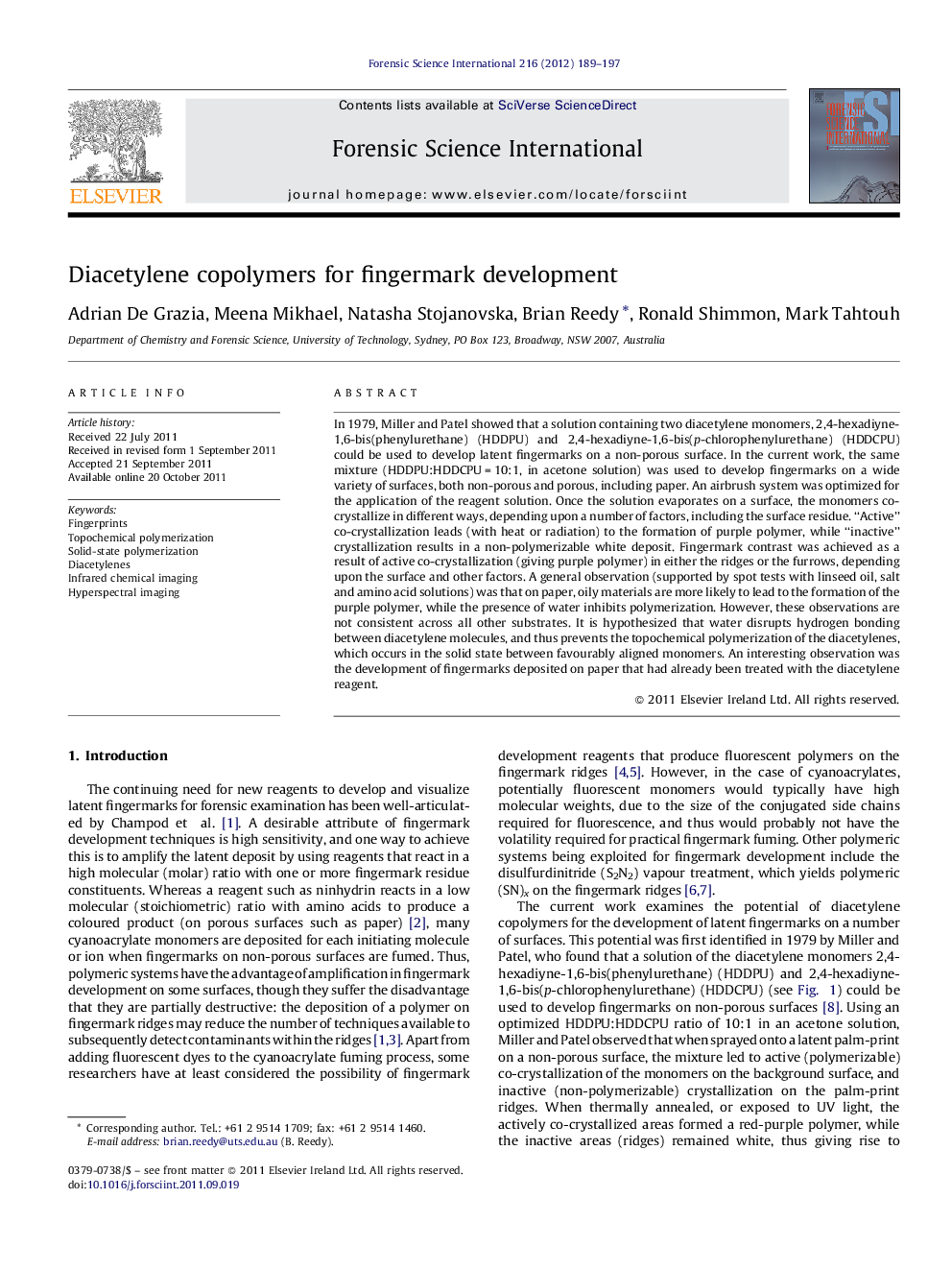| کد مقاله | کد نشریه | سال انتشار | مقاله انگلیسی | نسخه تمام متن |
|---|---|---|---|---|
| 96113 | 160455 | 2012 | 9 صفحه PDF | دانلود رایگان |

In 1979, Miller and Patel showed that a solution containing two diacetylene monomers, 2,4-hexadiyne-1,6-bis(phenylurethane) (HDDPU) and 2,4-hexadiyne-1,6-bis(p-chlorophenylurethane) (HDDCPU) could be used to develop latent fingermarks on a non-porous surface. In the current work, the same mixture (HDDPU:HDDCPU = 10:1, in acetone solution) was used to develop fingermarks on a wide variety of surfaces, both non-porous and porous, including paper. An airbrush system was optimized for the application of the reagent solution. Once the solution evaporates on a surface, the monomers co-crystallize in different ways, depending upon a number of factors, including the surface residue. “Active” co-crystallization leads (with heat or radiation) to the formation of purple polymer, while “inactive” crystallization results in a non-polymerizable white deposit. Fingermark contrast was achieved as a result of active co-crystallization (giving purple polymer) in either the ridges or the furrows, depending upon the surface and other factors. A general observation (supported by spot tests with linseed oil, salt and amino acid solutions) was that on paper, oily materials are more likely to lead to the formation of the purple polymer, while the presence of water inhibits polymerization. However, these observations are not consistent across all other substrates. It is hypothesized that water disrupts hydrogen bonding between diacetylene molecules, and thus prevents the topochemical polymerization of the diacetylenes, which occurs in the solid state between favourably aligned monomers. An interesting observation was the development of fingermarks deposited on paper that had already been treated with the diacetylene reagent.
Journal: Forensic Science International - Volume 216, Issues 1–3, 10 March 2012, Pages 189–197